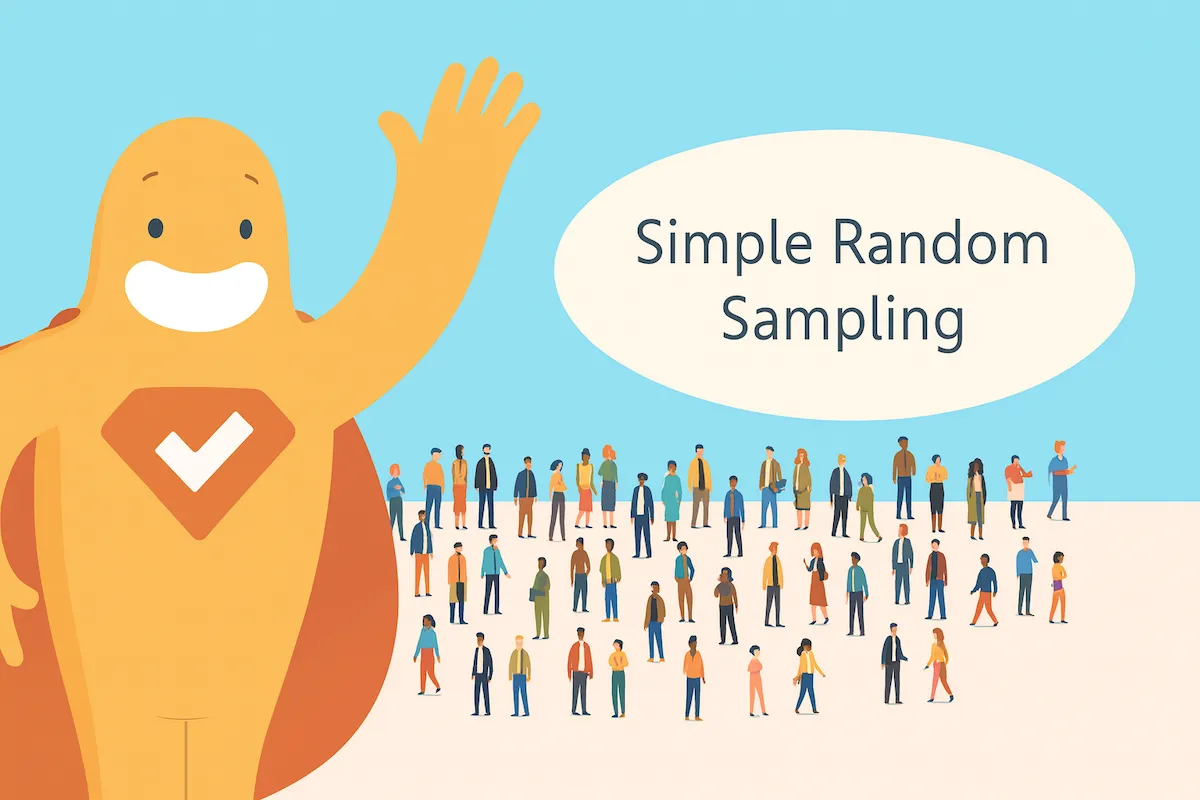Surveys, questionnaires, and polls are all data collection tools, but each serves a unique purpose. A survey is a comprehensive research process that involves collecting, analyzing, and interpreting data to gain insights. A questionnaire is simply a set of written questions used to gather individual feedback, often without deeper analysis. A poll, on the other hand, asks one simple question to gauge public opinion quickly. This article explains the key differences, examples, and when to use each method. It also covers popular survey question types, best practices for data collection, and how to select the most suitable approach to achieve reliable and actionable results.
Create your survey, questionnaire, or poll now!
Need to do some market research? Then chances are, you’ll want to conduct a survey. Or, maybe distribute a questionnaire. Better yet, maybe you should just take a poll. Scratching your head yet? It’s not surprising! That’s because many people use these three words interchangeably, when in fact each is unique in some way. Surveys, questionnaires, and polls are all different approaches to gathering information for research or decision-making.
Survey vs. Questionnaire vs. Poll: What’s the Difference?
To understand the differences between surveys, questionnaires, and polls, it’s best to first provide a definition, highlighting the key difference: a survey is a comprehensive process involving data collection, analysis, and insights from groups, while a questionnaire is a simpler, individual-focused data collection tool. Then, we’ll look at when you should use a survey vs a questionnaire, vs a poll, and take a look at some examples.
Surveys
A survey is a sophisticated data collection method that uses a questionnaire to gather data from a set of respondents (survey respondents, who provide the critical data needed for analysis and insights) (that’s right, a survey requires a questionnaire, but a questionnaire is not a survey; a questionnaire is just a tool of the survey). Countless surveys are conducted every year: Government surveys, marketing surveys, demographic surveys, military surveys, employer surveys, and more. A well-designed and thought-out survey provides researchers and organizations with insight into their target audience.
Surveys also offer flexibility in their length, question style, and more (this makes them very different from polls, which we’ll cover in a minute). Of course, the biggest distinction of surveys is analysis. Surveys aren’t just a series of questions you ask and put aside. After conducting a survey, an analysis of the questions is performed, where survey responses are aggregated and analyzed to understand trends and uncover patterns in behavior. This process leads to actionable insights that inform strategic decisions and improvements. This is why you use a survey vs a questionnaire in research.
Create your survey, questionnaire, or poll now!
Questionnaires
As previously mentioned, a questionnaire is part of a survey, hence the misuse of words. The main distinction between a survey vs a questionnaire is that while a survey asks questions, it also involves collecting and analyzing the data. A questionnaire is simply any set of written questions. A questionnaire is not concerned with delivery methods and especially statistical analysis; it’s more for collecting standalone information. Questionnaires are often used for collecting personal accounts or feedback from individuals, such as experiences or opinions. To that end, collecting precise or legitimate responses from respondents is not a top priority. Think of it this way: a questionnaire is just content—questionnaires frequently use closed-ended questions to simplify the process; a survey is the content, method of delivery, and analysis of responses.
Polls
A poll is a type of survey that asks one simple question of respondents. Unlike an entire survey, a poll is limited to a single question and does not involve comprehensive data collection or analysis. Because polls are limited to one question (although some pollsters sneak in one or two follow-up questions), it won’t collect demographic information and other details. Polls are generally multiple-choice questions that ask the public important questions – or frivolous questions. It all depends on the poll. Of course, because there’s only one question, analysis is very easy!
Types of Surveys, Questionnaires, Polls, and Data Collection Methods, and When You Should Use Them
When is it appropriate to use a survey, questionnaire, or poll? We break it down for you! Choosing between these options depends on whether your research requires primary and secondary methods, as well as the specific data collection technique best suited to your objectives.
Selecting the right approach ensures effective data collection and helps you achieve reliable results.
Create your survey, questionnaire, or poll now!
Data Collection Tools
Data collection tools are the backbone of any successful research project, enabling organizations and researchers to gather, organize, and analyze data efficiently. Choosing the right data collection tools is crucial for ensuring that the data collected aligns with your research objectives and maintains high standards of accuracy and reliability.
Today, a wide range of data collection tools is available to suit different research needs. Online surveys are among the most popular, offering a fast and scalable way to reach a specific target audience and collect both quantitative and qualitative data. With platforms like SurveyLegend, you can easily design visually engaging surveys, distribute them across multiple channels, and analyze responses in real time—all while ensuring data integrity.
Focus groups are another valuable data collection method, especially when you want to gather in-depth qualitative feedback. By bringing together a small group of participants, researchers can explore attitudes, motivations, and opinions in a more interactive setting, often uncovering insights that might be missed through surveys alone.
Create your survey, questionnaire, or poll now!
Observational tools are also widely used, particularly in qualitative research. These tools allow researchers to collect data by directly observing behaviors or events, providing context and richer data that can be critical for understanding trends and patterns.
Ultimately, the choice of data collection tools depends on your research objectives, the type of data you need to collect, and the resources available. Whether you’re conducting market research, gathering customer feedback, or running academic studies, leveraging the right tools ensures that the data collected is both actionable and reliable, setting the stage for meaningful data analysis and informed decision-making.
Using a Survey + Types of Survey Questions
Surveys collect in-depth feedback from respondents. Organizations create surveys to gather and analyze survey data, enabling them to better understand customer behavior and preferences. They allow researchers and marketers to collect data from respondents to analyze in order to achieve goals or gain insight, and a follow-up survey can be particularly effective for continuous improvement. Analyzing survey data helps organizations gain insights and extract valuable insights for decision-making. As mentioned, survey questions are very flexible; you can collect quantitative and qualitative data, and ask questions in a wide variety of ways.
10 Most Popular Types of Survey Questions
1. Multiple choice questions
This provides respondents with multiple answers, making multiple-choice questions a common type of closed-ended question used in surveys.
2. Rating scale questions
These surveys may use stars, A-F grading, thumbs up/down, etc., which generate numerical data that can be analyzed statistically.
3. Likert scale questions
Questions with a range of answers (usually 5–7 points, such as strongly agree/agree/neither agree nor disagree/disagree/strongly disagree), which are designed to produce statistical data for research analysis. Learn more about Likert scale questions.
Create your survey, questionnaire, or poll now!
4. Matrix questions
These typically consist of a column of questions to the left and a row of answers across the top, helping to collect and organize survey responses from participants. SurveyLegend has created a unique type of matrix survey designed to improve response by making respondents scroll with every answer. Learn more about matrix questions.
Create your survey, questionnaire, or poll now!
5. Dropdown questions
Click the answer box, and a drop-down menu appears, allowing you to select your answer (a birth year is a common demographic dropdown).
6. Open-ended questions
Questions that allow participants to write in their answers.
7. Demographic questions
Age, gender, race, education level, etc. Learn more about demographic questions.
8. Ranking questions
These ask the participant to rank things in order of preference.
Create your survey, questionnaire, or poll now!
9. Image choice questions
Answers are a series of images from which to choose.
10. Slider questions
These allow participants to slide a bar across a scale, such as 1–10.
Want more proof of the flexibility of surveys? There are even specific types within these categories, such as pop-up surveys.
Create your survey, questionnaire, or poll now!
Using a Questionnaire + Types of Questionnaire Questions
Questionnaires capture standalone information. They are limited in scope and aren’t all that sophisticated; after all, they’re not going to be used for broader analysis. Questionnaires are often used for building an email list or collecting personal information for lead generation. Questionnaires are used to gather information efficiently from individuals. Let’s say you go to a restaurant and fill out a comment card. It asks your thoughts on service, food quality, and ambiance, and then requests your email address. The data gathered from these questionnaires may not always be analyzed for data quality or reliability. Chances are, customers’ answers are not being analyzed; instead, the restaurant just wants the ability to email you special offers.
Another example of a questionnaire is the form you complete at your doctor’s office, asking about your health history and current ailments. Again, these questions aren’t being asked to conduct a larger study on common reasons for visiting the doctor. They’re simply being asked so that the doctor will have an idea of your history and your current condition when he sees you.
When designing questionnaires, it is important to ensure reliable data and maintain data quality to support accurate and trustworthy insights.
Using a Poll + Types of Poll Questions
Polls are put to use when you want to get a quick pulse of the public’s opinion. They won’t give you mountains of insight, but they are a fast and easy way to analyze data from a large population. While polls are effective for collecting data and gathering data quickly, they may not provide the broader context needed for deeper analysis. A common example of a poll is a political poll; however, in our age of social media, anyone can make one, and they tend to pop up all the time on Facebook, Twitter, etc. So, while a poll may be asking important questions (a newspaper poll may ask, “Who are you voting for in the upcoming election?”), they’re also used to drive social media engagement (a pizza restaurant may ask, “What is your favorite pizza topping?”). A couple of things to remember about polls:
- Keep things simple. Anyone should understand what you’re asking and how to respond. Save the complex stuff for surveys.
- Limit the multiple-choice options that you offer. If you provide too many, people may not give it much thought or just not answer. Respondents need to be able to make a quick selection and then go about their day.
Conclusion
Although some people use the words interchangeably, surveys, questionnaires, and polls are different animals. Surveys are for research or marketing purposes involving data analysis; questionnaires seek to obtain specific information about a person, with no further analysis involved; and a poll is one simple question that quickly gauges public opinion. Ready to start creating your survey, questionnaire, or poll? SurveyLegend allows you to easily create all three and has many beautifully pre-designed templates from which to choose.
Were you surprised by the differences between surveys vs questionnaires, vs polls? Any other distinctions we may have missed? Let us know in the comments!
Create your survey, questionnaire, or poll now!
Frequently Asked Questions (FAQs)
What is the difference: survey vs. questionnaire vs. poll?
A survey collects data for analysis. Surveys use various research methods, including primary data collection and secondary data analysis. Questionnaires are standalone questions that are not analyzed (for example, a medical form). A poll asks one question to get a quick public opinion.
Are questionnaires part of a survey?
A survey always involves a questionnaire; what makes it a survey is the analysis of the results. Primary data collection methods, such as interviews and observations, are often used in surveys. A questionnaire, however, is not a survey.
How many questions are in a poll?
Polls are generally one question. However, some pollsters add a couple of follow-up questions. While this provides additional insight, it also complicates analysis and makes things less “quick and easy”. Secondary methods, such as analyzing research articles or existing datasets, can complement primary data collection in research.



